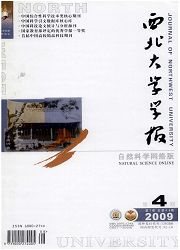

 中文摘要:
中文摘要:
目的研究四川原型盆地的破坏过程。方法川西南构造变形野外研究。结果川西南山地的隆起破坏了四川原型盆地,大凉山中生代凹陷以及楚雄盆地原本可能是四川原型盆地的组成部分。川西南山地的隆升与两个背斜构造的形成有关:牛栏江背斜的形成造成川西南的隆起,始于北西-南东向挤压,是北西-南东向紫云-罗句断裂的左行走滑引发的,该断裂是协调四川盆地顺时针旋转运动的主干断裂之一。结论川西南隆起受控于两次构造事件,分别发生在晚古新世或渐新世,导致四川原型盆地的破坏,楚雄盆地向西挤出。晚新生代,随着青藏高原沿鲜水河-小江断裂左行走滑断裂挤入扬子西缘,川西南发生北西-南东向挤压,由此形成大渡河背斜,与此同时,楚雄盆地沿小江断裂向南运动并位移至现今的位置。
 英文摘要:
英文摘要:
Aim To reveal the process of dismemberment of the proto-Sichuan basin. Methods Deformation study on southwestern Sichuan. Results The structural study in the lower part of the Dadu River area in southwest Sichuan shows that the deformation in this region is characterized by a complex anticline with fold axis plunging to the east. The anticline is cored by the Proterozoic granite, overlain by the sedimentary sequence with age ranging from Sinian to Mesozoic, both marking the basement and sedimentary cover of the Yangtze block, respectively. The sedimentary cover rocks within the southwestern margin of the Sichuan basin were shortened along the northern flank of the anticline in N-S direction along a series of nose structures, whereas those within the Daliangshan region along the southern flank of the anticline were shortened in N-S direction along a series of linear syncline and anticline. Conclusion These structures can be defined as the products of interfering deformation, result from at least two events. One occurred in early Tertiary time, resulted in the separation between the Sichuan and Chuxiong basing, and as a consequence,the Sichuan basin was closed up;and another occurred in the late Cenozoic time, caused by the southeastward movement of the Tibetan plateau along the Xianshuhe-Xiaojiang strick-slip fault.
 同期刊论文项目
同期刊论文项目
 同项目期刊论文
同项目期刊论文
 Crustal structure of the Tethyan Himalaya, southern Tibet: new constraints from old wide-angle seism
Crustal structure of the Tethyan Himalaya, southern Tibet: new constraints from old wide-angle seism Late Miocene ice sheet elevation in the Grove Mountains, East Antarctica, inferred from cosmogenic 2
Late Miocene ice sheet elevation in the Grove Mountains, East Antarctica, inferred from cosmogenic 2 Dip-slip rate determined by cosmogenic surface dating on a Holocene scarp of the Daju fault, Yunnan,
Dip-slip rate determined by cosmogenic surface dating on a Holocene scarp of the Daju fault, Yunnan, Upper mantle P-wave tomography across the Longmenshan fault belt from passive-source seismic observa
Upper mantle P-wave tomography across the Longmenshan fault belt from passive-source seismic observa An overview of the crustal structure of the Tibetan plateau after 35 years of deep seismic soundings
An overview of the crustal structure of the Tibetan plateau after 35 years of deep seismic soundings Crustal P-wave velocity structure and layering beneath Zhujiangkou-Qiongdongnan basins, the northern
Crustal P-wave velocity structure and layering beneath Zhujiangkou-Qiongdongnan basins, the northern Late Quaternary glaciation of the Tianshan, Central Asia, Using cosmogenic 10Be surface exposure dat
Late Quaternary glaciation of the Tianshan, Central Asia, Using cosmogenic 10Be surface exposure dat 期刊信息
期刊信息
